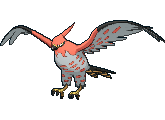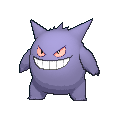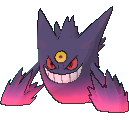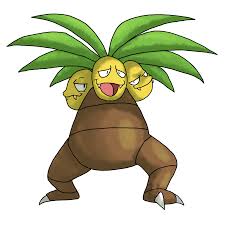My ramblings:
Out of all of the new Pokémon that have emerged from this latest generation, Talonflame has been the one that I've both been most excited for, and had the least success with. Of course, to look at, one might not think all that much of this majestic creature, thinking no more than 'it's the in-game flier and egg hatcher', but the secret, like many of the current Pokémon that are prevalent in the X/Y metagame, is in it's ability: Gale Wings.
Having this ability has been paramount for the seeming success, and certainly, the popularity in the competitive environment, allowing it to easily attack before attacked, as well as having some interesting options for team support in moves such as Tailwind, Will-O-Wisp, and indeed Roost. What I've found fascinating to see thus far is the way that this Pokémon in particular has been played, with many people opting to use Brave Bird over all other moves simply because it's free damage. Certainly I think the pressure that can be placed on a team by having the ability to use such a powerful priority move, but I think it's not something to be taken lightly.
The problems that I feel Talonflame faces are actually numerous, so for ease of presentation, I'll list them below:
Low attacking stats:
Quite a common theme in this metagame has been the advent of several very potent Physical attackers such as Mega Mawile, Kangaskhan, Garchomp, Azumarill to name a few means not only that it faces stiff competition for a team slot from a purely offensive perspective, but the popularity of intimidate to cope with these threats turns even super effective attacks into 2HKOs, rather than the OHKOs that these other Pokémon can achieve. For example:
-1 252+ Atk Choice Band Talonflame Brave Bird vs. 252 HP / 12 Def Scrafty: 144-170 (83.7 - 98.8%) -- guaranteed 2HKO
We see here that after Intimidate, Scrafty is never OHKOed by Choice Band Brave Bird from Adamant Talonflame. The main issue with this is that while many Pokémon are threatened by it, it's not unreasonable to EV to survive even the strongest versions of its attacks.
Low Defensive stats:
You might have got to this point, only to start thinking.. 'Sure, I have to play around Intimidate, but as long as I'm getting KOs, why do I care about its bulk???'. And a good question to ask indeed. The example given above of Scrafty really highlights the fact that once somebody has EVed to account for Talonflame, regardless of whether the Brave Bird or Flare Blitz is Super Effective or not, Talonflame becomes open to easily being KOed back, even by the Pokémon that it's targetting. Assisted by the recoil damage associated with it's offensive options, as well as potentially some 'chip damage' from a Life Orb, almost any neutral attack will result in the KO, and sometimes, even a resisted attack. Playing as such can give you an advantage in momentum shift, but does anybody really want to let a Pokémon faint to gain momentum as a consistent tactic? I would hope not!
Lack of consistent damaging moves:
When you look at Talonflames offensive movepool, while it offers moves that some Pokémon would give their left fin for, it leaves Talonflame in a rather sticky situation. It has no moves, other than U-turn, that do damage without recoil that it can use effectively (I know what you're thinking, Acrobatics doesn't count until gems exist!), and even then, to do damage you're forced to switch out. When you look at the early and mid game scenarios that are likely to occur, this isn't so much of an issue, but unlike most Pokémon, Talonflame can fail more than most in the end game due to this lack of consistent damage. A dangerous place to be in any competitive environment, as being able to lock down a win is solely the most important thing in the game.
That all being said, it's typing is fantastic, with its only weaknesses being Water, Rock and Electric, and being resistant to 6 very prominent types, and, of course, immunity to ground, and with that I think it's lack of bulk can easily be offset. It's STAB is incredible, with it's meager offensive capabilities made bearable by the powerful moves it has access to, and the offensive and defensive momentum that it can maintain due to U-turn.
Low Defensive stats:
You might have got to this point, only to start thinking.. 'Sure, I have to play around Intimidate, but as long as I'm getting KOs, why do I care about its bulk???'. And a good question to ask indeed. The example given above of Scrafty really highlights the fact that once somebody has EVed to account for Talonflame, regardless of whether the Brave Bird or Flare Blitz is Super Effective or not, Talonflame becomes open to easily being KOed back, even by the Pokémon that it's targetting. Assisted by the recoil damage associated with it's offensive options, as well as potentially some 'chip damage' from a Life Orb, almost any neutral attack will result in the KO, and sometimes, even a resisted attack. Playing as such can give you an advantage in momentum shift, but does anybody really want to let a Pokémon faint to gain momentum as a consistent tactic? I would hope not!
Lack of consistent damaging moves:
When you look at Talonflames offensive movepool, while it offers moves that some Pokémon would give their left fin for, it leaves Talonflame in a rather sticky situation. It has no moves, other than U-turn, that do damage without recoil that it can use effectively (I know what you're thinking, Acrobatics doesn't count until gems exist!), and even then, to do damage you're forced to switch out. When you look at the early and mid game scenarios that are likely to occur, this isn't so much of an issue, but unlike most Pokémon, Talonflame can fail more than most in the end game due to this lack of consistent damage. A dangerous place to be in any competitive environment, as being able to lock down a win is solely the most important thing in the game.
That all being said, it's typing is fantastic, with its only weaknesses being Water, Rock and Electric, and being resistant to 6 very prominent types, and, of course, immunity to ground, and with that I think it's lack of bulk can easily be offset. It's STAB is incredible, with it's meager offensive capabilities made bearable by the powerful moves it has access to, and the offensive and defensive momentum that it can maintain due to U-turn.
The Sets:
Talonflame @ Choice Band
Gale Wings
Adamant
IVs: 31 / 31 / 31 / 30 / 30 / 31
4 HP / 252 Atk / 252 Spd
- Brave Bird
- Flare Blitz
- U-turn
- Tailwind / Me First
Choice Band gives the ability to start dishing out some serious damage. The first three moves are the standard moves that any fully offensive Talonflame should run in my humble opinion. The last option is a little more tricky to call, but these are the reasons for these suggestions. Tailwind in a pinch can offer some solid team support either early game to feign a non-Choice Band set, or to allow you to outspeed and KO your opponents Pokémon either mid or late game to close down a battle. The more interesting move that I have looked into is Me First. This is really a very situational move, and not without it's dangers, but it allows the use of an opponent's move before they use it. This can provide you with the consistent damaging moves that it would like, but take care when using it, a simple prediction could be the end of Talonflame. IVs are set to give Hidden Power Ground in the event of copying a Mega Manectric Hidden Power.
Talonflame @ Life Orb
Gale Wings
Adamant
4 HP / 252 Atk / 252 Spd
- Brave Bird
- Flare Blitz
- U-turn / Tailwind
- Protect / Substitute / Tailwind
Really very similar to the previous set, this set takes advantage of the ability to both change moves and protect itself. Again, due to the offensive nature of this set, I've opted for a 'this is the job, do it the best you can' approach with the EVs. Substitute is something I wouldn't actually recommend on this set due to the large amount of recoil, but as a move it's too good not to consider.
Talonflame @ Life Orb
Gale Wings
Adamant
68 HP / 252 Atk / 188 Spd
- Brave Bird
- Flare Blitz / U-turn
- Will-O-Wisp
- Protect / Tailwind / Quick Guard
This set trades some speed for the ability to switch in and out a little bit more comfortably, as well as being able to outspeed Garchomp and burn it, effectively removing it as a threat for the rest of the battle. Quick Guard is a fantastic support move, allowing the easy dispatch of other Talonflame, as well as a safeguard from the Prankster users that annoy it with Thunder Wave, and Fake Out-ers.
Talonflame @ Charti Berry
Gale Wings
Jolly
252 HP / 92 Atk / 92 Def / 4 Sp.Def / 68 Spd
- Brave Bird (Really!?)
- Will-O-Wisp
- Quick Guard
- Tailwind
A somewhat unconventional set that I believe has some merit in the current metagame. This set takes advantage of not only the opponent thinking that you're likely going to have an offensive focus, but also capitalises on the fantastic support movepool available to it. The main focus is to either allow your team the set up opportunities previously not available due to Fake Out or Prankster priority, but also to be able to quickly neuter physical attackers that could otherwise threaten your team. The EVs allow it to survive a 252 Atk invested Adamant Rhyperior Stone Edge after Intimidate, and outspeed Garchomp.
- Kyriakou
Wolfe's thoughts
Creative Set
Talonflame @ Lum Berry/Persim Berry
Gale Wings
Brave
31/31/31/x/31/22
Ev's Pending
- Brave Bird/Acrobatics
-Flare Blitz
- Protect
-Roost/Tailwind/WoW/Quck Guard
I have not had a lot of
experience using Talonflame and I feel Kyriakou did a fantastic job
summarizing how it works so I wont add on, but there is one set that I
would like to talk about that is not mentioned above. I had the idea of
running Talonflame partnered with Meowstic, but with an unconventional
set. The trick is that Talonflame is Brave 22 Speed IV holding a Lum
Berry to prevent Swagger, while Meowstic outspeeds and is able to
Priority Swagger before Priority Brave Bird occurs, activating an
unpredictable +2 Brave Bird from Talonflame. 22 Speed IV's are used in order to allow Talonflame to outspeed and OHKO other bulky support Meowstic, provided Talonflame's partner invests in speed. Obviously Brave Bird forms the primary offense with this set, though Acrobatics is another option that can be used if one is confident that the berry can be activated consistently before attacking. Flare Blitz and Protect are standard, and the last slot can be used to support a team or Talonflame best depending on what support is needed.
-Wolfe








